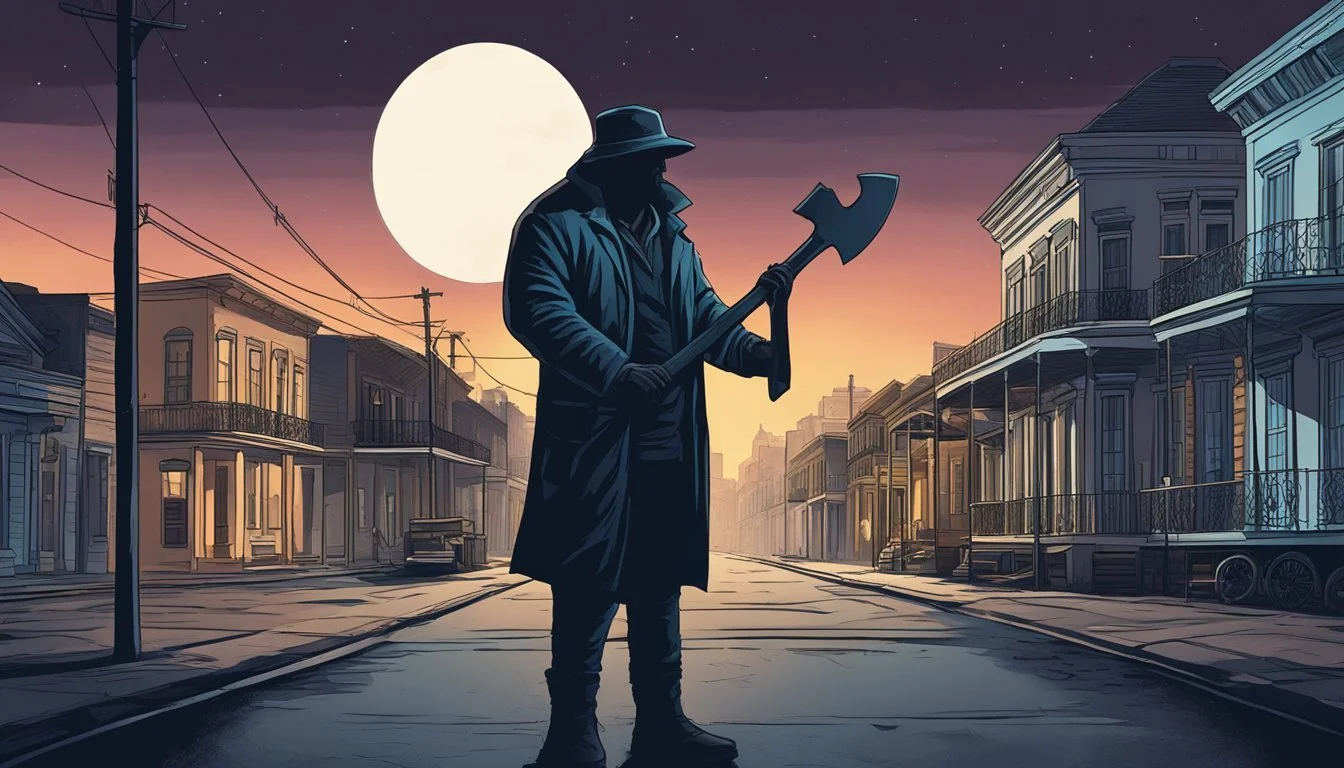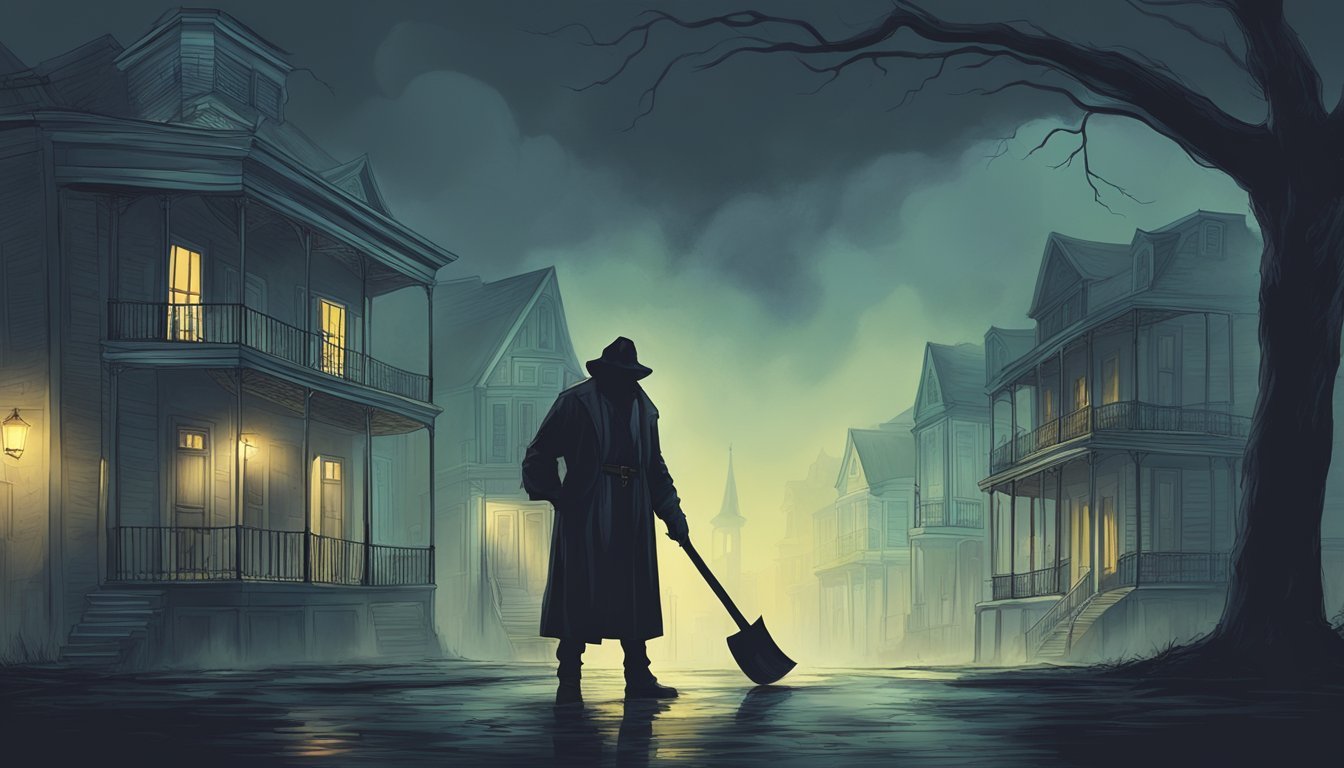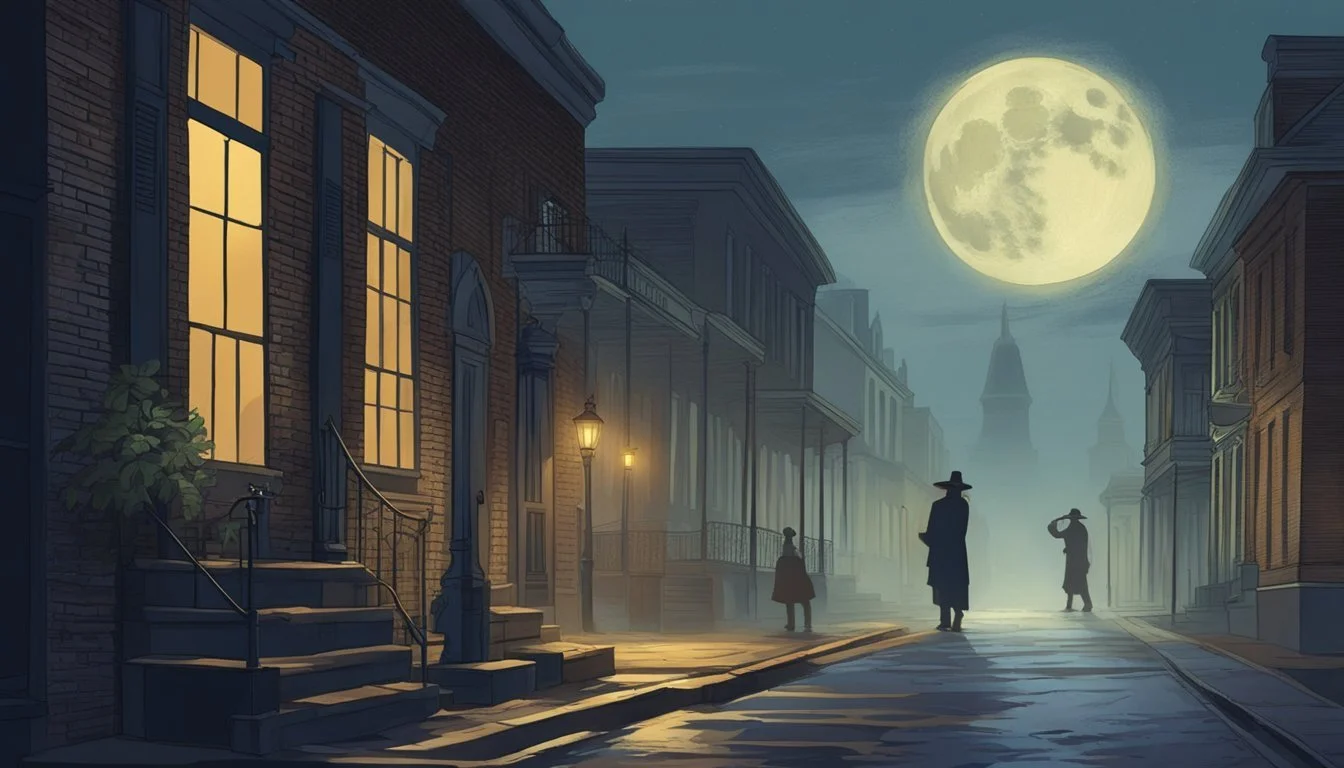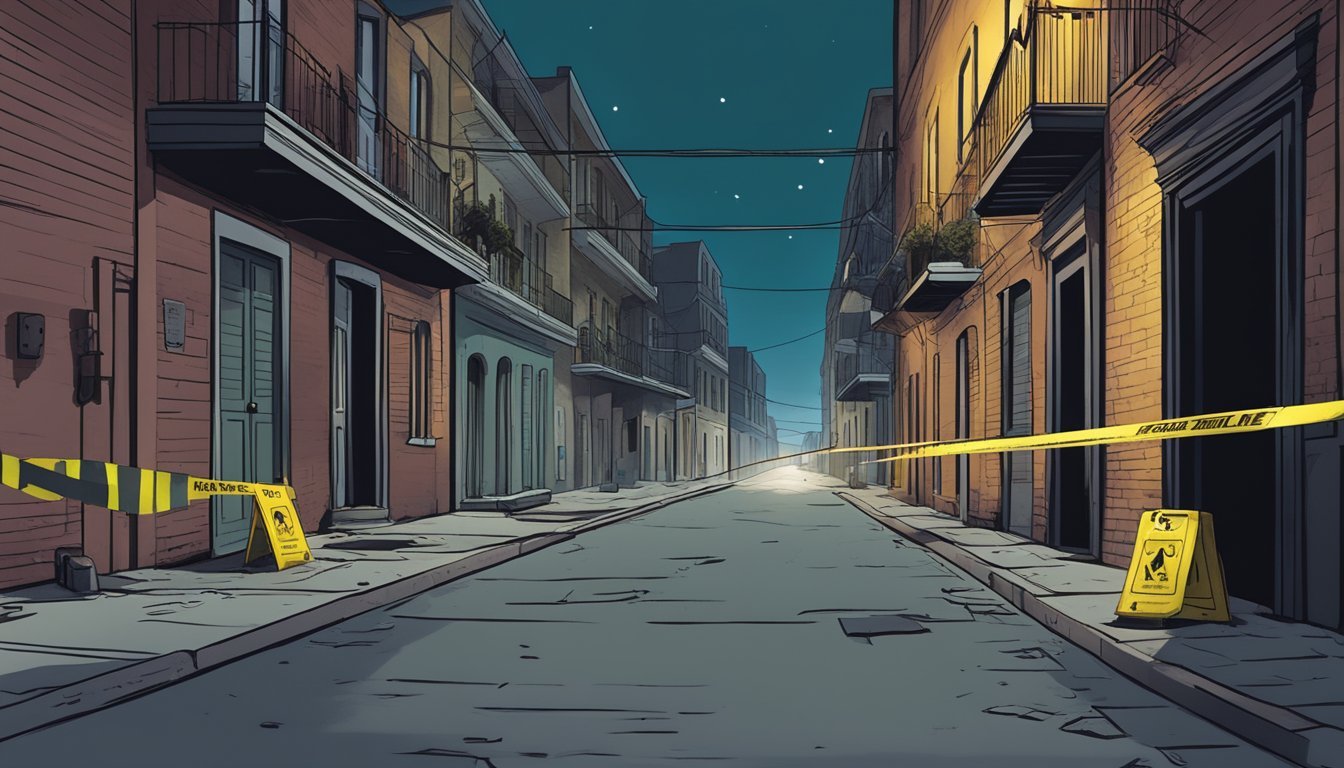Cedric Tresvant: 3 Eye-Opening Documentaries on the New Orleans Axeman
Exploring the Unsolved Mystery
The Axeman of New Orleans terrorized the city in the early 20th century, leaving a trail of brutal murders that captivated and horrified residents. This mysterious killer's reign of terror has since become the subject of numerous books, films, and documentaries exploring the unsolved case.
Cedric Tresvant's three documentaries on the Axeman of New Orleans offer viewers a compelling look into one of America's most enigmatic serial killers. Through meticulous research and gripping storytelling, Tresvant sheds new light on the crimes, suspects, and cultural impact of the Axeman's murderous spree. His films provide a fresh perspective on this chilling chapter in New Orleans history.
1) 'The Axeman Cometh' by NPR
'The Axeman Cometh' is a compelling documentary produced by NPR that explores the chilling saga of the New Orleans Axeman. This audio feature delves into the unsolved murders that terrorized the city in the early 1900s.
The documentary skillfully weaves together historical accounts and expert interviews to paint a vivid picture of the era. It examines the societal context that allowed the killer to evade capture for so long.
NPR's production sheds light on the various theories surrounding the Axeman's identity. It also explores the lasting impact of these crimes on New Orleans' culture and collective memory.
The documentary stands out for its meticulous research and engaging storytelling. It offers listeners a balanced perspective on this dark chapter of New Orleans history.
'The Axeman Cometh' serves as an excellent introduction to the case for those unfamiliar with the Axeman murders. It also provides fresh insights for true crime enthusiasts already acquainted with the story.
2) 'The Man from the Train' by Bill James
'The Man from the Train' is a true crime book authored by Bill James and his daughter Rachel McCarthy James in 2017. The book delves into a series of unsolved axe murders that occurred across America between 1898 and 1912.
Using statistical analysis and historical research, Bill James argues that these crimes were committed by a single serial killer. He proposes that the perpetrator traveled by train, targeting families living near railroad tracks.
James's investigation led him to identify the killer as Paul Mueller, a German immigrant. The book details the patterns and similarities in the murders, suggesting they were the work of one individual.
The authors examine various crime scenes, including the infamous Villisca axe murders of 1912. They present evidence linking these incidents to other similar crimes across the country.
'The Man from the Train' showcases James's analytical skills, typically applied to baseball statistics, in solving historical cold cases. The book offers a unique perspective on early 20th-century crime investigation techniques.
https://en.wikipedia.org/wiki/The_Man_from_the_Train
3) 'Murder in the Rue Dumaine' by David Feldman
'Murder in the Rue Dumaine' is a captivating documentary that examines the Axeman of New Orleans case. Director David Feldman delves into the historical context of the murders, exploring the social and cultural landscape of early 20th century New Orleans.
The film presents a detailed analysis of the crime scenes and investigative techniques used at the time. Feldman interviews historians and crime experts to provide insights into the killer's possible motives and methods.
'Murder in the Rue Dumaine' stands out for its focus on the victims and their families. It humanizes those affected by the Axeman's reign of terror, offering a poignant look at the impact on the New Orleans community.
The documentary also explores the role of jazz music in the Axeman legend. It examines the infamous letter purportedly written by the killer, which promised to spare those playing jazz on a specific night.
Feldman's film provides a balanced perspective on the various theories surrounding the Axeman's identity. It presents evidence and expert opinions without drawing definitive conclusions, allowing viewers to form their own interpretations.
Background of Cedric Tresvant
Cedric Tresvant, a renowned documentarian, gained recognition for his in-depth exploration of the New Orleans Axeman case. His upbringing and early career experiences shaped his investigative approach and storytelling style.
Early Life and Career
Cedric Tresvant was born in New Orleans in 1985. He grew up fascinated by the city's rich history and mysterious legends. As a child, he often visited local libraries, devouring books on unsolved crimes and urban myths.
Tresvant studied journalism at Tulane University, graduating with honors in 2007. He began his career as a local news reporter, covering crime stories and cold cases. This experience honed his investigative skills and fueled his passion for uncovering hidden truths.
In 2012, Tresvant transitioned to documentary filmmaking. He produced several short films on New Orleans culture before turning his attention to the Axeman case.
Inspiration Behind His Work
The Axeman of New Orleans case captivated Tresvant from an early age. He was intrigued by the killer's connection to jazz music and the mysterious letters sent to local newspapers. This fascination drove him to conduct extensive research on the subject.
Tresvant spent years combing through archives, interviewing historians, and analyzing police reports. He aimed to present a comprehensive view of the case, exploring not just the crimes but also their impact on New Orleans society.
His dedication to thorough research and objective storytelling set Tresvant's work apart. He sought to balance factual accuracy with engaging narratives, bringing historical events to life for modern audiences.
Investigative Techniques in the Documentaries
The documentaries on the New Orleans Axeman employ various investigative methods to uncover new insights into the century-old case. Forensic analysis and eyewitness accounts play crucial roles in piecing together the mystery.
Forensic Analysis
Modern forensic techniques shed new light on the Axeman murders. DNA testing of preserved evidence provides potential leads on the killer's identity. Crime scene reconstruction using 3D modeling helps visualize attack patterns and weapon characteristics.
Experts analyze historical records and crime scene photos to identify commonalities across incidents. This includes examining wound patterns, entry points, and items stolen or left behind at each location.
Forensic linguists study the infamous "Axeman letter" for clues about the writer's background and mental state. Handwriting analysis compares the letter to other documents from the era.
Eyewitness Accounts and Interviews
The documentaries feature interviews with descendants of victims and investigators. These firsthand accounts offer unique perspectives on the murders' impact and initial investigations.
Historians and local experts provide context on 1910s New Orleans, including social tensions and police procedures of the time. Their insights help frame the crimes within the era's cultural landscape.
Retired detectives who studied the cold case share their theories and investigative approaches. They discuss challenges in solving the murders decades after they occurred.
Paranormal investigators relay stories of alleged Axeman hauntings, adding a supernatural element to the narrative. While not evidence-based, these accounts illustrate the killer's lasting impact on local folklore.
Impact on Public Perception
The Cedric Tresvant documentaries profoundly altered how the public viewed the New Orleans Axeman case. They shed new light on the historical events and challenged long-held assumptions about the killer's identity and motives.
Cultural Significance
The documentaries sparked renewed interest in New Orleans' jazz-era history. Local tourism boards reported a surge in Axeman-related queries after the films aired. Several jazz clubs began hosting "Axeman nights" featuring 1910s music.
Museums in New Orleans created new exhibits exploring the case. The Cabildo, which houses the Louisiana State Museum, opened a permanent Axeman display in 2025.
The films also inspired a wave of Axeman-themed art and literature. Local artists produced paintings and sculptures depicting the mysterious killer. Three novels based on the case became bestsellers in 2026.
Media Representation
Prior to the documentaries, most media portrayals of the Axeman were sensationalized and inaccurate. The films presented a more nuanced view, emphasizing historical context and debunking myths.
News outlets reassessed their coverage of unsolved crimes after the documentaries aired. Several major networks implemented new guidelines for reporting on cold cases.
True crime podcasts experienced a shift in focus. Many began prioritizing historical research and expert interviews over speculation. The "Axeman Approach" became industry shorthand for thorough, fact-based reporting on unsolved crimes.
Social media discussions about the case became more informed. Online forums saw an increase in posts citing primary sources and academic research.





